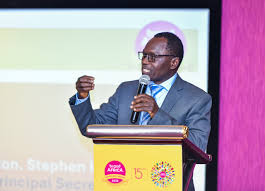The government has called on county administrations to ease wayleave acquisition processes and reduce levies to attract more ICT investments across Kenya.
Broadcast and Telecommunications Principal Secretary Stephen Isaboke, speaking during the 9th Devolution Summit in Homa Bay County, warned that high fees, restrictive permits, and multiple levies are significantly driving up the cost of ICT projects in the counties. This, he said, has discouraged investors from expanding services, particularly in underserved areas.
“We want to extend technology and digital services in every corner of the country, but as soon as operators begin network extensions, they face restrictions on wayleaves, permits, levies, and fees. Once all these costs are factored in, some projects become prohibitive, forcing investors to abandon them,” Isaboke noted.
He emphasized the need for harmonized regulations between national and county governments to create a conducive environment for private sector participation in ICT infrastructure development. “Our work as policymakers is to align national and county strategies. Investors are coming to create jobs for the youth and open up counties. Counties need to embrace this progressive thinking,” he added.
The government, through the Universal Service Fund (USF), is implementing an ambitious connectivity plan targeting at least 3,800 government institutions across all 47 counties. According to USF Director Leo Boruett, phase one of the project has already connected 540 government offices, while phase two will cover thousands more, including schools, hospitals, and police stations.
“In Homa Bay County alone, we will be connecting 108 institutions. Apart from mobile connectivity, we are rolling out fibre to improve access,” Boruett said.
He noted that the USF, funded by contributions from telecommunications service providers, has achieved 96.3 percent population coverage as of 2021. Over the past seven years, 800,000 people in 19 counties have been connected.
However, usage patterns remain a concern. While mobile penetration is high, 64.7 percent of users rely on phones primarily for calls, with only 35 percent using them to access the internet.
The ICT ministry hopes that by easing investment hurdles, enhancing infrastructure, and encouraging affordable access, counties can drive up internet adoption and unlock economic opportunities in the digital space.

